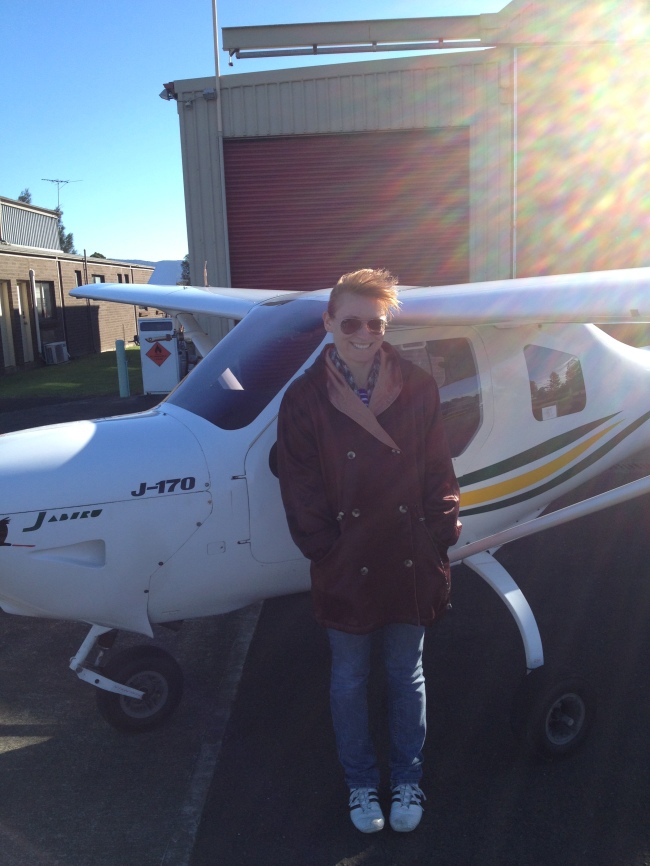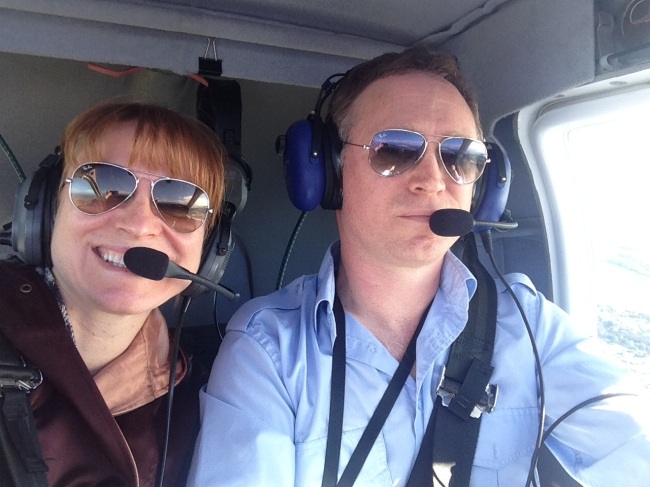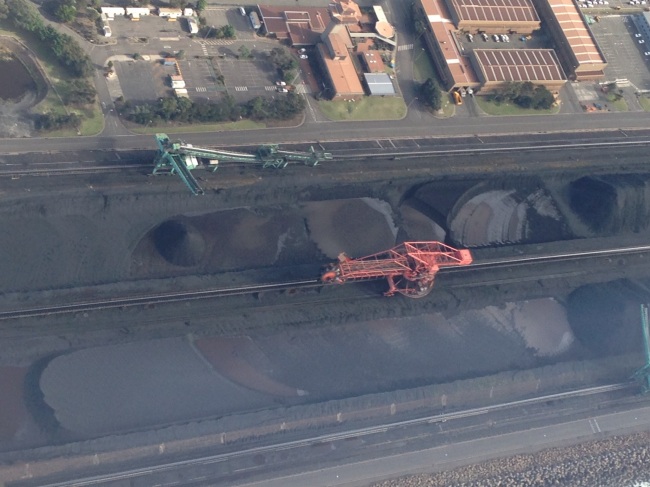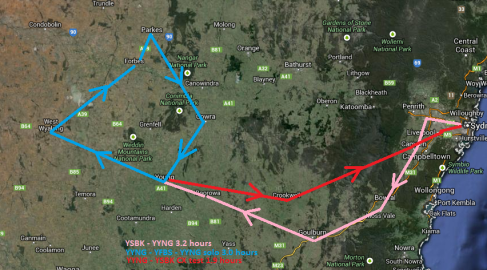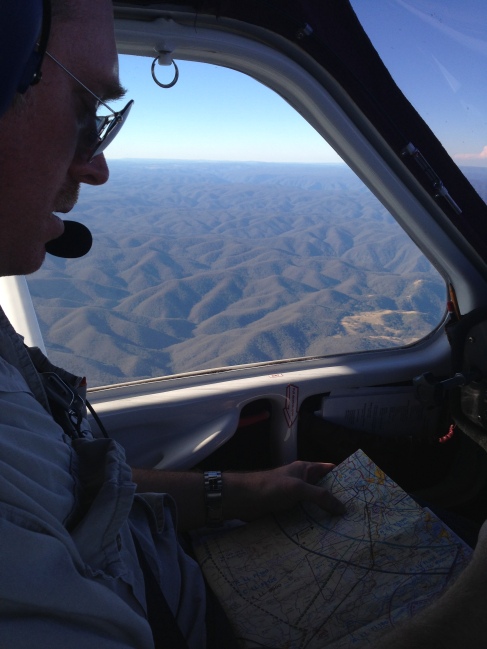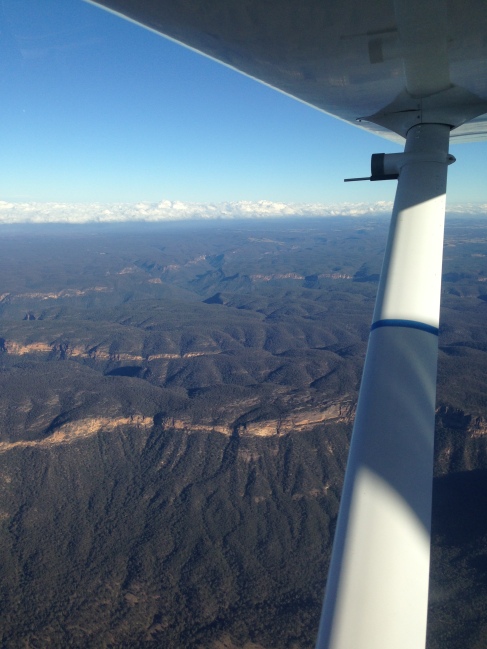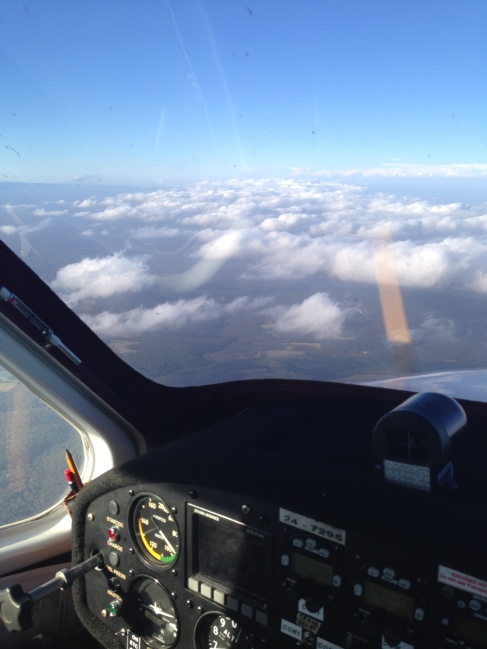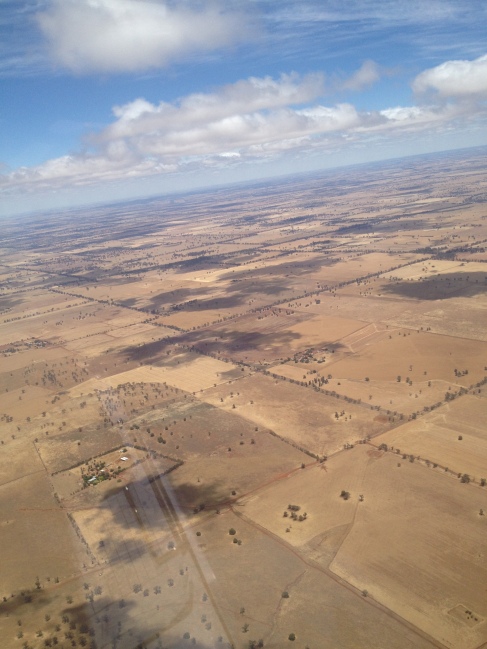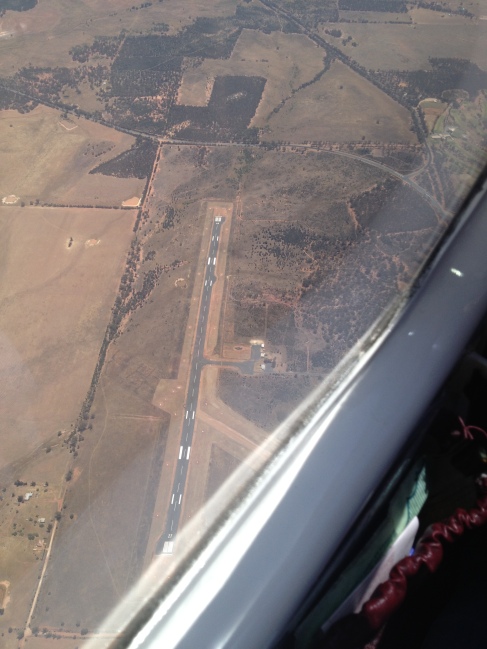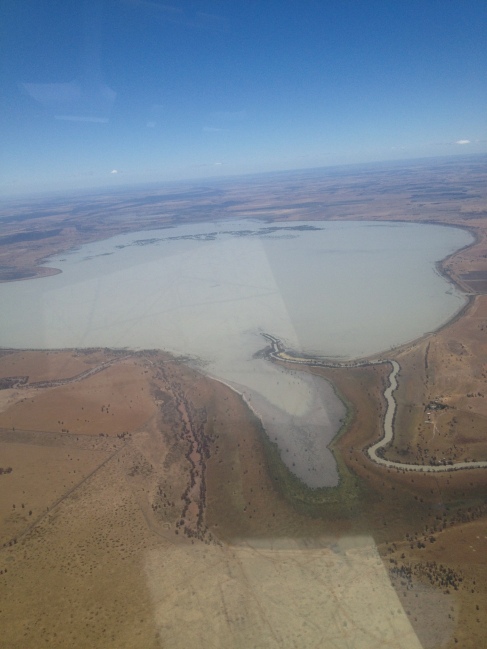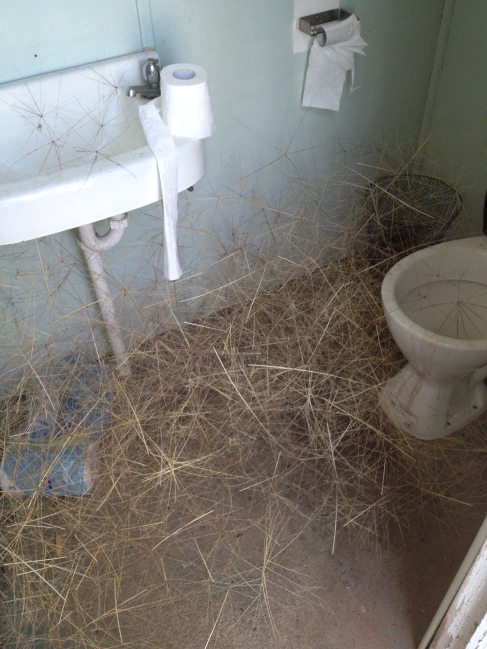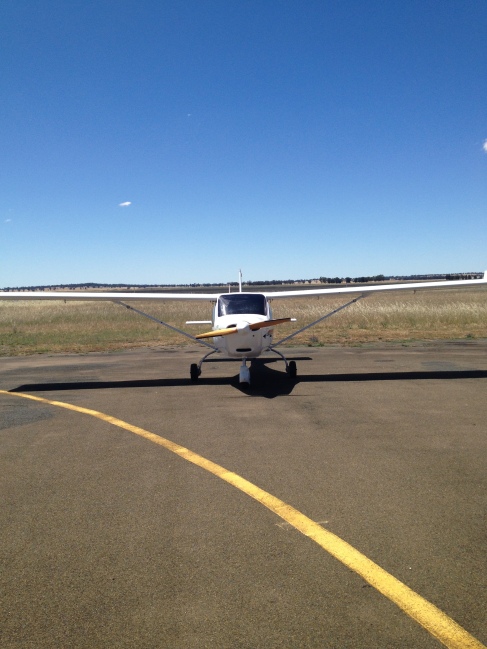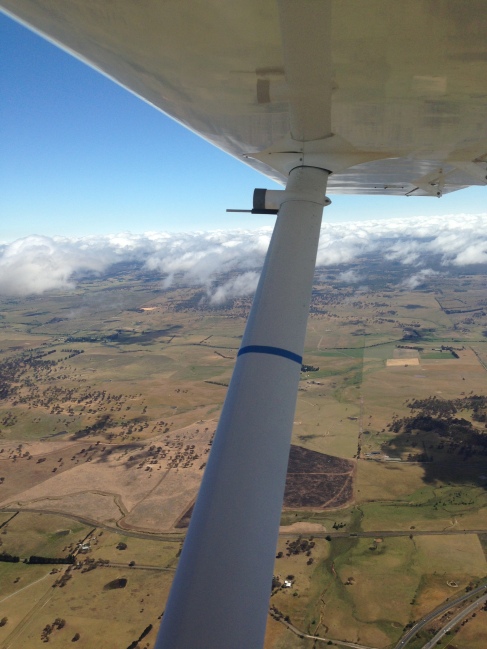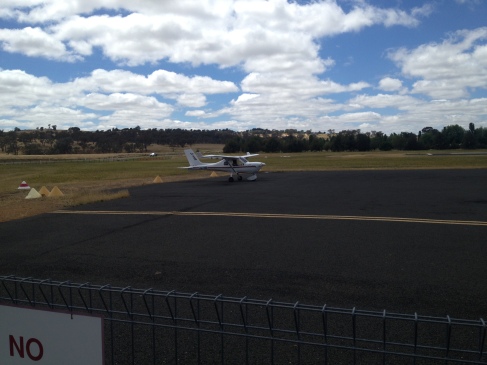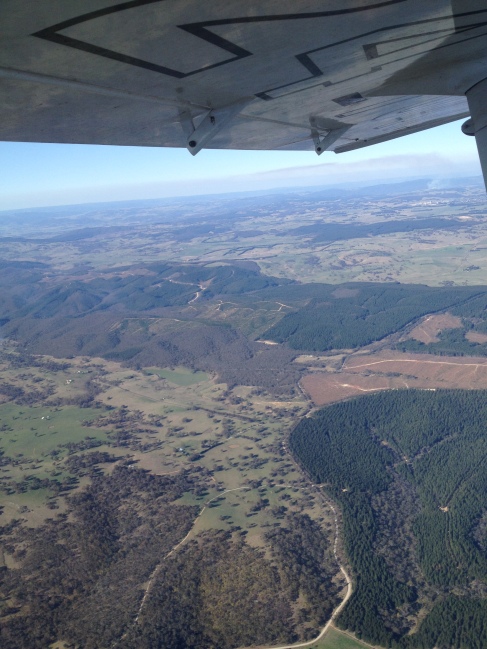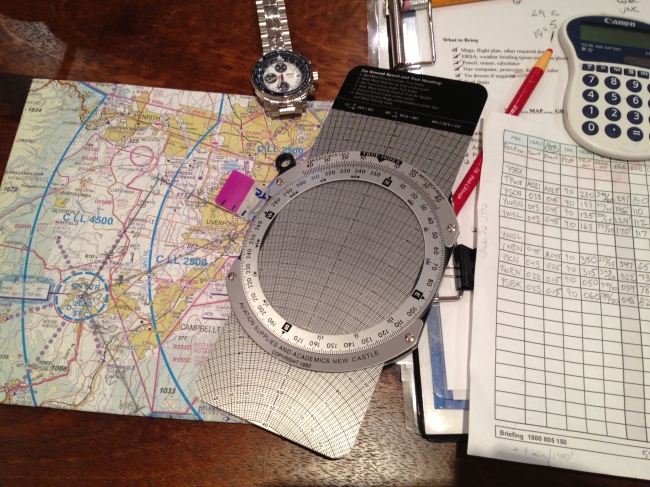I really have been horrible about updating this… but I promise I have not been idle! Last Monday, 1st of September 2104 to be exact, I finally took and passed my flight test for my Private Pilot’s Licence! More on this in a little bit.
Since my last update, after earning my Controlled Airspace Endorsement, I did what is called a Pre-licence Flight Test. This was a long cross-country trip where I had to go through all of the paces from startup to shutdown and everything in between. It was much like the test I did for the Recreational certificate, and much like that one, I found that at close to 3 hours of flying my brain was fried and I had trouble with some of the basic things.
In a nutshell, we went north via the Lane of Entry to Parramatta > Patonga > Warnervale and Cessnock where we did some touch and goes and engine failures. I got a little discombobulated on the circuits and it took me awhile to get into the groove of it.. I also am finding that after a leg of straight and level, my brain takes some waking up to get back into the procedures of circuits. So that was one area that needed improvements.
We departed Cessnock and on the way to the defunct Aero Pelican strip (YPEC) on the outskirts of Lake Macquarie we did our steep turns, stalls, incipient spins. I found YPEC with no problems, and of course Chris pulled an engine failure on me right there… no problem, from 3500 feet I had all day to get to the strip. We just did a go-around and I began the trip back via Warnervale.
Before I could get back up to height, Chris threw in a line of hypothetical angry low clouds between us and I had to get down to 1500′ and get us to Mangrove Creek reservoir. Luckily, I could see Warnervale from where I was, so I estimated my position, drew a line to the new waypoint, eyeballed the degrees for the track, subtracted 12 degrees for magnetic variation, a bit more for the crosswind, and determined a new heading. Once I got us pointed in that direction, I worked out ground speed and an estimate for time. Now it was just a matter of waiting the time, and looking for clues along the way. I ended up very close, within a mile or less, and within a minute or 2 of my estimate. Not bad for low level and being unfamiliar with the landmark.
We pointed back south so I could look for the Brooklyn Bridge and hop on the Southbound Lane of Entry back to Bankstown. On the way we did another .2 hours of instruments – turns, descents, climbs, standard stuff. We made it back to Bankstown and this is where I mentioned earlier the circuits started to really fall apart. I did them OK I guess, nothing to write home about for sure, but neither Chris nor I were happy with them, especially knowing that I have done much better in the past.
We then spent a few hours going over all of the knowledge items I should brush up on for the oral test before the flight test – Chris is a real trooper, they do not pay him near enough I am sure!
So I made a booking to do more circuits and a bit more practice in the training area, just to make sure I had stalls and steep turns down. That was a very busy weekday, and workload was even higher – even had a runway direction change in the middle of joining on the arrival procedure – I had read about that but never had to do it! Talk about pressure! But, I just did what the tower told me and was now doing circuits on runway 11L instead of 29R. After a couple of those, the tower moved me over to runway 11R (having me cross all the way over on a long crosswind leg). For the final landing, I did request 11L so I’d be closer to the taxiway back to Schofield’s. That was done as a short field landing, and we came to a stop before the first taxiway intersection.
We were much happier with the procedures and I had been working on the knowledge items, so we were happy to start thinking about booking me with a Testing Officer to do my official flight test!!
Of course, it immediately started raining for the next several weeks which is never helpful when you want to strike while the iron is hot. After a couple of weeks, Bill rang me and scheduled Monday the 1st of September at 9 am as it looked like it was going to be the only decent day for weeks on either side (which more or less turned out to be the case).
This actually gave me quite a bit of time to study all of the items I missed on my PPL written exam, which would need to be discussed during the oral exam, as well as all of the other items of general aviation knowledge I needed to brush up on. He wanted me to plan 3 different scenarios, and depending on the weather we would pick the best one on the day. I even bought new charts so I wouldn’t risk adding confusion with my already well-loved charts. I always donate my old charts to the flying school, they are good for new students who will need to learn how to read them but won’t need to buy them for awhile yet. Pay it forward…
When the day arrived, of course I was out there bright and early (before they opened of course) and got myself settled with some coffee and looked over all of the area forecasts. I decided I would have the best chance by choosing option 3, which was up to Cessnock again then to Singleton, Denman, then Mount McQuoid, Calga, and back. Winds and cloud cover was very light in this direction, and I had recently done most of it during my pre-test, so it should be familiar enough. Why make it hard on myself, right?
Did the weight and balance and performance charts, finished out my flight plan, submitted my notification, called for full fuel then grabbed my wad of papers and went in to get Bill. Without going on too much about it, I feel like I did very well on the oral exam portion, definitely felt well-prepared (thanks, Chris!).
I went out and did a preflight-inspection on trusty old INH and before long, I was starting up the engine with Bill in the right seat with his testing officer hat (and glare) on, and the dreaded Clipboard. Now Bill has been doing this for longer than I have been alive, and he just oozes authority. Think back to when you were 17 and taking your driving test – and now imagine your grandpa (who is also the sheriff and a former race car driver) is the one giving the test, and I think you’ll get the idea.
Anyway, the flight itself was much like the pre-licence flight so no need to bore with those details. Mistakes were certainly made, and nerves were at an all time high. But in the end, it appears that they are mostly interested in whether you recognise and correct your mistakes, and whether you are safe. I am not sure I would have passed myself, but I must have done OK because he passed me!
We did a very long debrief session afterwards where we went over everything I did wrong, what I did right, what I could have done differently. He had me listen to some recordings and checked my comprehension so that he could tick the box for “speaks English” (whatever…). Then he extended his hand and said “Congratulations”.
So now I am just waiting for the paperwork, reflecting back on a long and circuitous path to this point, pondering what is next, and scheming my first trip! I now have almost 85 hours in the logbook, and it took only about 16 hours in the Piper with the Recreational Certificate behind me – I would suggest however one’s mileage would vary widely – some might do it quicker, and some might take significantly longer. In the end, I feel like I had a very solid grounding in piloting and navigation, thanks to Brett over at Sydney Jabiru, and that my skills were sharpened and my confidence increased thanks to Chris at Schofields. I have been very lucky to have been put with some very bright and talented instructors, and only hope I can emulate their examples.
I am just beginning to be broadly aware that I don’t even know what I don’t know, and will be learning aviation for the rest of my life! For now, I just plan to enjoy the privileges and sharpen my skills through experience. Who knows where this will take me – the sky is the limit; and it turns out the sky is a very big place!
